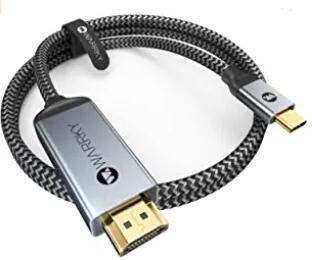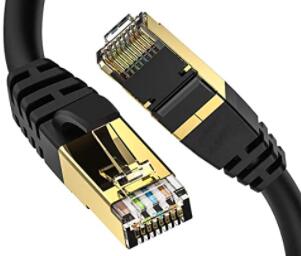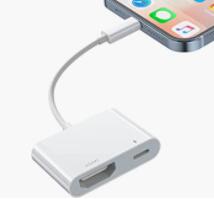Position: Home > Cable > HDMI Cable > Article
USB to HDMI Cable: Everything You Need to Know
USB to HDMI Cable: Everything You Need to Know
Are you looking for a simple and affordable way to connect your laptop or desktop computer to your TV? If so, a USB to HDMI cable may be just what you need.What is a USB to HDMI Cable?
A USB to HDMI cable is a type of cable that allows you to connect a device with a USB port to a device with an HDMI port. These cables are typically used to connect a computer to a TV or projector, allowing you to display your computer screen on a larger display.How Does a USB to HDMI Cable Work?
USB to HDMI cables work by converting the digital signal from your computer's USB port into an HDMI signal that can be transmitted to a TV or projector. The cable itself contains a small chip that performs this conversion. Once the signal has been converted, it can be transmitted to the TV or projector using a standard HDMI cable.
By Now
What Are the Benefits of Using a USB to HDMI Cable?
There are several benefits to using a USB to HDMI cable, including:Easy to use: USB to HDMI cables are plug-and-play, which means you don't need any special software or drivers to use them. Simply plug the cable into your computer and TV or projector and you're ready to go.
Affordable: USB to HDMI cables are typically less expensive than other types of video cables, such as VGA or DVI cables.
High-quality video: USB to HDMI cables can transmit high-quality video signals, including HD and even 4K video.
Audio support: Many USB to HDMI cables also support audio transmission, allowing you to hear audio from your computer through your TV or projector.
What Are the Drawbacks of Using a USB to HDMI Cable?
While there are many benefits to using a USB to HDMI cable, there are also some drawbacks to consider:Limited distance: USB to HDMI cables typically have a limited transmission distance, often no more than 15 feet. If you need to connect your computer to a display that is farther away, you may need to use a different type of cable or a wireless display adapter.
Potential for lag: USB to HDMI cables can sometimes introduce lag or delay into the video signal, especially if you're transmitting high-quality video. This can result in a less smooth or responsive viewing experience.
Power consumption: USB to HDMI cables may consume more power than other types of cables, which can be an issue for laptops or other devices with limited battery life.
How to Choose the Best USB to HDMI Cable for Your Needs?
When choosing a USB to HDMI cable, there are several factors to consider:Length: Make sure the cable is long enough to reach from your computer to your TV or projector.
Resolution: Make sure the cable supports the resolution you want to display. For example, if you want to display 4K video, make sure the cable is rated for 4K.
Audio support: If you want to transmit audio as well as video, make sure the cable supports audio transmission.
Brand: Consider purchasing a cable from a reputable brand to ensure quality and reliability.
Conclusion
USB to HDMI cables can be a convenient and affordable way to connect your computer to a larger display. They offer high-quality video and audio transmission, and are easy to use. However, they do have some limitations, including a limited transmission distance and the potential for lag. When choosing a USB to HDMI cable, consider factors such as length, resolution, and audio support, and choose a reputable brand for best results.FAQs
1. Can a USB to HDMI cable transmit audio as well as video?Yes, many USB to HDMI cables also support audio transmission, allowing you to hear audio from your computer through your TV or projector. However, it's important to make sure the cable you choose supports audio transmission if this is important to you.
2. How long can a USB to HDMI cable be?
USB to HDMI cables typically have a limited transmission distance, often no more than 15 feet. If you need to connect your computer to a display that is farther away, you may need to use a different type of cable or a wireless display adapter.
3. Do I need any special software or drivers to use a USB to HDMI cable?
No, USB to HDMI cables are plug-and-play, which means you don't need any special software or drivers to use them. Simply plug the cable into your computer and TV or projector and you're ready to go.
4. Can I use a USB to HDMI cable to connect my laptop to a monitor?
Yes, USB to HDMI cables can be used to connect a laptop or desktop computer to a monitor, TV, or projector with an HDMI input.
5. Can I use a USB to HDMI cable to connect my smartphone or tablet to a TV?
No, USB to HDMI cables are not designed to be used with smartphones or tablets. Instead, you may need to use a different type of cable or adapter that is compatible with your device.



